Thermal Safety Assessment Method for Power Devices in Natural Air-Cooled Converters
Abstract
1. Introduction
2. Influence of Airflow Rate Randomness on the Thermal Safety of Natural Air-Cooled Converters
2.1. Equivalent Thermal Network Model of Natural Air-Cooled Converters
2.2. Experimental Set-Up
2.3. Analysis on the Influence of Thermal Safety
3. Time–Frequency Domain Analysis for Convective Heat Resistance of Natural Air-Cooled Converters
3.1. Extracting Convective Heat Resistance of Converter Housing
3.2. Principle of Wavelet Packet Transform
3.3. Time–Frequency Domain Characteristics of Housing Convective Heat Resistance
4. The Proposed Thermal Safety Assessment Method
4.1. Monte Carlo Principles
4.2. Proposed Assessment Method
4.3. Over-Temperature Risk Function
4.4. Validation and Analysis
5. Conclusions
Author Contributions
Funding
Data Availability Statement
Conflicts of Interest
References
- Qian, C.; Gheitaghy, A.M.; Fan, J.; Tang, H.; Sun, B.; Ye, H.; Zhang, G. Thermal management on IGBT power electronic devices and modules. IEEE Access 2018, 6, 12868–12884. [Google Scholar] [CrossRef]
- Bahman, A.S.; Ma, K.; Blaabjerg, F. A lumped thermal model including thermal coupling and thermal boundary conditions for high-power IGBT modules. IEEE Trans. Power Electron. 2018, 33, 2518–2530. [Google Scholar] [CrossRef]
- Chen, H.; Yang, J.; Xu, S. Electrothermal-based junction temperature estimation model for converter of switched reluctance motor drive system. IEEE Trans. Ind. Electron. 2020, 67, 874–883. [Google Scholar] [CrossRef]
- Lutz, J.; Schlangenotto, H.; Scheuermann, U.; Doncker, R.D. Semiconductor Power Devices; Springer: Berlin, Germany, 2011; pp. 360–368. [Google Scholar]
- Drofenik, U.; Cottet, D.; Müsing, A.; Meyer, J.M.; Kolar, J.W. Modelling the thermal coupling between internal power semiconductor dies of a water-cooled 3300V/1200A HiPak IGBT module. In Proceedings of the International Exhibition and Conference for Power Electronics, Intelligent Motion and Power Quality (PCIM Europe 2007), Nuremberg, Germany, 22–24 May 2007. [Google Scholar]
- Wu, R.; Iannuzzo, F.; Wang, H.; Blaabjerg, F. Fast and accurate Icepak-PSpice co-simulation of IGBTs under short-circuit with an advanced PSpice model. In Proceedings of the 7th IET International Conference on Power Electronics, Machines and Drives (PEMD 2014), Manchester, UK, 8–10 April 2014; pp. 1–5. [Google Scholar]
- Greco, G.; Vinci, G.; Bazzano, G.; Raciti, A.; Cristaldi, D. Layered electro-thermal model of high-end integrated power electronics modules with IGBTs. In Proceedings of the IECON 2014-40th Annual Conference of the IEEE Industrial Electronics Society, Dallas, TX, USA, 29 October–1 November 2014; pp. 1575–1580. [Google Scholar]
- Lemmens, J.; Vanassche, P.; Driesen, J. Optimal control of traction motor drives under electrothermal constraints. IEEE J. Emerg. Sel. Top. Power Electron. 2014, 2, 249–263. [Google Scholar] [CrossRef]
- Chen, H.; Ji, B.; Pickert, V.; Cao, W. Real-time temperature estimation for power MOSFETs considering thermal aging effects. IEEE Trans. Device Mater. Reliab. 2014, 14, 220–228. [Google Scholar] [CrossRef]
- Du, X.; Li, G.; Li, T.; Sun, P.; Zhou, L. Multi-time scale lifetime evaluation of IGBT modules in the wind power converter. Proc. CSEE 2015, 35, 6152–6161. [Google Scholar]
- Górecki, K.; Górecki, P. Nonlinear Compact Thermal Model of the IGBT Dedicated to SPICE. IEEE Trans. Power Electron. 2020, 35, 13420–13428. [Google Scholar] [CrossRef]
- Górecki, K.; Zarebski, J.; Bisewski, D.; Dąbrowski, J. Nonlinear Compact Thermal Model of Power Semiconductor Devices. IEEE Trans. Compon. Packag. Technol. 2010, 33, 643–647. [Google Scholar] [CrossRef]
- Heng, K.; Yang, X.; Wu, X.; Ye, J.; Liu, G. A Temperature-Dependent Physical Thermal Network Model including Thermal Boundary Conditions for SiC MOSFET Module. IEEE Trans. Electron Devices 2022, 69, 4444–4452. [Google Scholar] [CrossRef]
- Górecki, P.; Wojciechowski, D. Accurate Computation of IGBT Junction Temperature in PLECS. IEEE Trans. Electron Devices 2020, 67, 2865–2871. [Google Scholar] [CrossRef]
- Yang, X.; Xu, S.; Heng, K.; Wu, X. Distributed Thermal Modeling for Power Devices and Modules with Equivalent Heat Flow Path Extraction. IEEE J. Emerg. Sel. Top. Power Electron. 2023, 11, 5863–5876. [Google Scholar] [CrossRef]
- Zhang, X.; Wang, S.; Xin, L.; Wu, K.; Li, J. A 3-D thermal network model for the temperature monitoring of thermal grease as interface material. Microelectron. Reliab. 2020, 114, 113816. [Google Scholar] [CrossRef]
- Wang, H.; Zhou, Z.; Xu, Z.; Ge, X.; Yang, Y.; Zhang, Y.; Yao, B.; Xie, D. A Thermal Network Model for Multichip Power Modules Enabling to Characterize the Thermal Coupling Effects. IEEE Trans. Power Electron. 2024, 39, 6225–6245. [Google Scholar] [CrossRef]
- Shi, Y.; Liu, J.; Ai, Y.; Chen, S.; Bai, Y. Dynamic IGBT Three-Dimensional Thermal Network Model Considering Base Solder Degradation and Thermal Coupling between IGBT Chips. IEEE Trans. Transp. Electrif. 2023, 9, 2994–3011. [Google Scholar] [CrossRef]
- Ma, M.; Guo, W.; Yan, X.; Yang, S.; Zhang, X.; Chen, W.; Cai, G. A Three-Dimensional Boundary-Dependent Compact Thermal Network Model for IGBT Modules in New Energy Vehicles. IEEE Trans. Ind. Electron. 2021, 68, 5248–5258. [Google Scholar] [CrossRef]
- Long, Y.; Song, Z. Thermal Analysis of High Torque Density Axial-Radial Flux Permanent Magnet Machine Based on Lumped Parameter Thermal Network. In Proceedings of the 2023 26th International Conference on Electrical Machines and Systems (ICEMS), Zhuhai, China, 5–8 November 2023; pp. 1443–1448. [Google Scholar]
- Zhao, H.; Zhang, X.; Li, J.; Zhang, F.; Zhao, W.; Zhang, Y.; Gerada, D.; Zhang, H. Effectiveness of Thermal Interface Materials on Electrical Machines Thermal Performance with Heat Pipes. IEEE Trans. Transp. Electrif. 2023, 10, 1274–1285. [Google Scholar] [CrossRef]
- Wang, R.; Fan, X.; Li, D.; Qu, R.; Li, L.; Zou, T. Convective Heat Transfer Characteristics on End-Winding of Stator Immersed Oil-Cooled Electrical Machines for Aerospace Applications. IEEE Trans. Transp. Electrif. 2022, 8, 4265–4278. [Google Scholar] [CrossRef]
- Górecki, P. Compact Thermal Modeling of Power Semiconductor Devices with the Influence of Atmospheric Pressure. Energies 2022, 15, 3565. [Google Scholar] [CrossRef]
- BURRUS. Introduction to Wavelets and Wavelet Transforms: A Primer; China Machine Press: Beijing, China, 2005. [Google Scholar]
- Metropolis, N.; Ulam, S. The Monte Carlo method. J. Am. Stat. Assoc. 1949, 44, 335–341. [Google Scholar] [CrossRef]
- Hammersley, J. Monte Carlo Methods; Springer Science & Business Media: Berlin/Heidelberg, Germany, 2013. [Google Scholar]
- Moriguchi, K. An approach for deriving growth equations for quantities exhibiting cumulative growth based on stochastic interpretation. Phys. A Stat. Mech. Its Appl. 2018, 490, 1150–1163. [Google Scholar] [CrossRef]
- Christensen, J.H.; Mortensen, J.; Hansen, A.B.; Andersen, O. Chromatographic preprocessing of GC-MS data for analysis of complex chemical mixtures. J. Chromatogr. A 2005, 1062, 113–123. [Google Scholar] [CrossRef] [PubMed]
- Lieskovská, E.; Jakubec, M.; Jarina, R.; Chmulík, M. A review on speech emotion recognition using deep learning and attention mechanism. Electronics 2021, 10, 1163. [Google Scholar] [CrossRef]

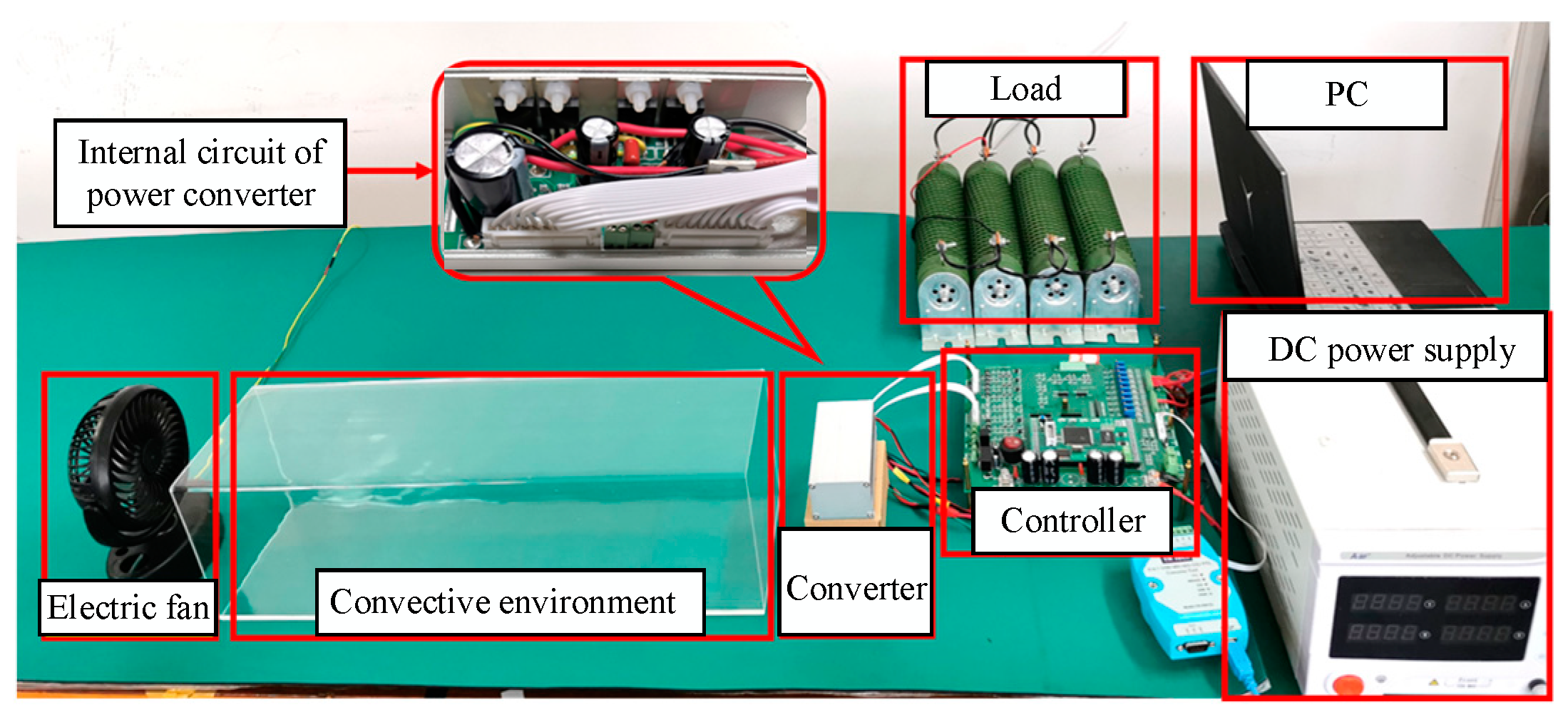

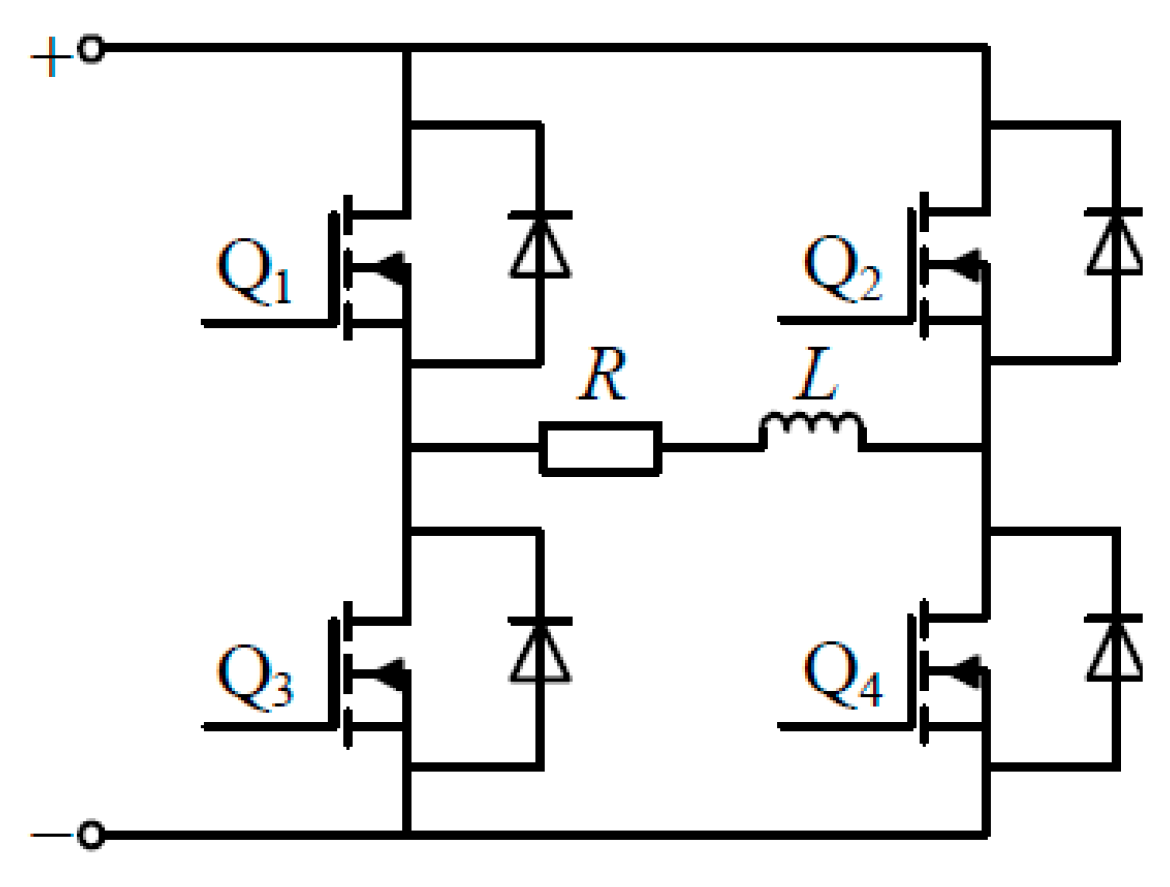
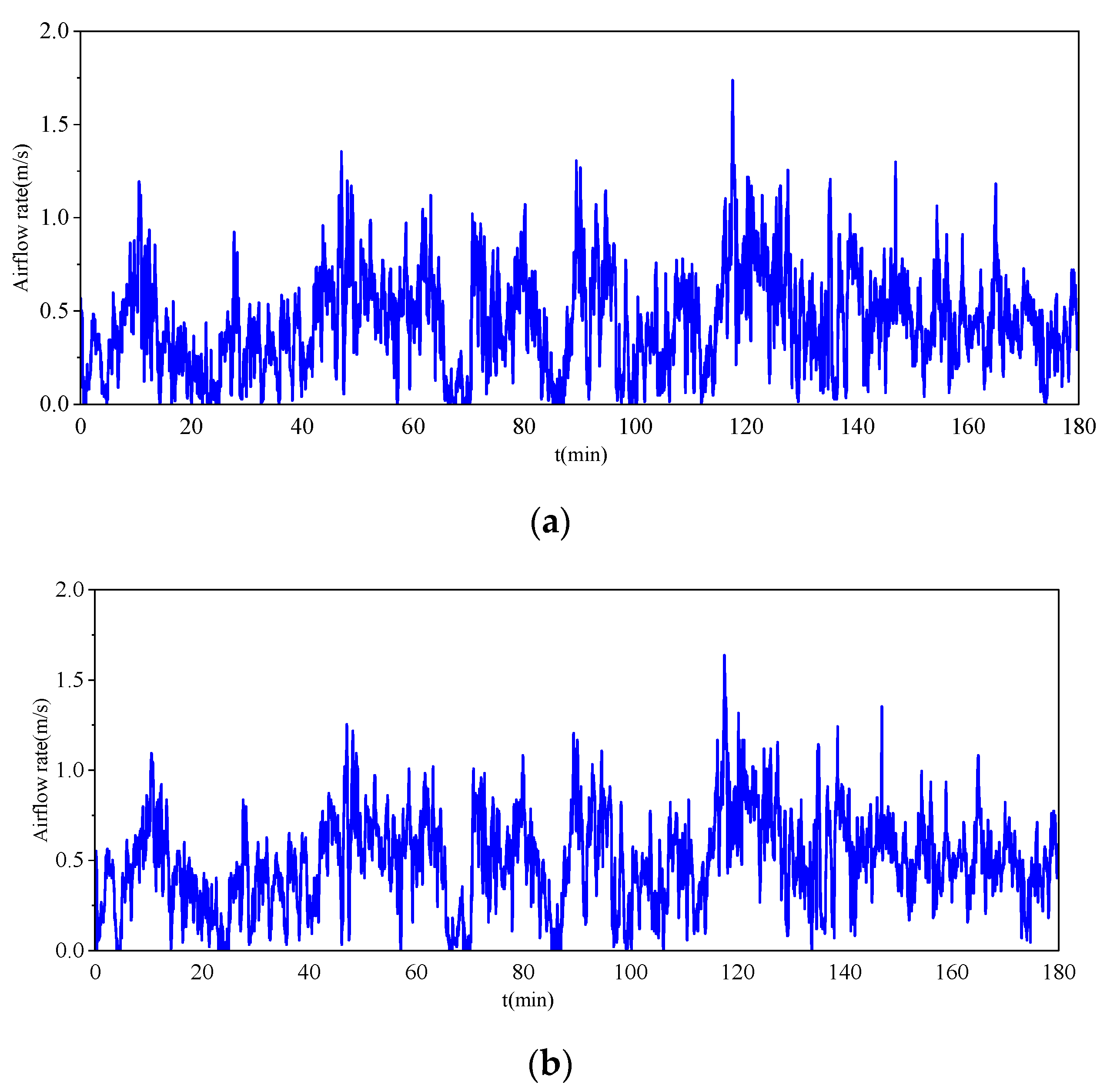
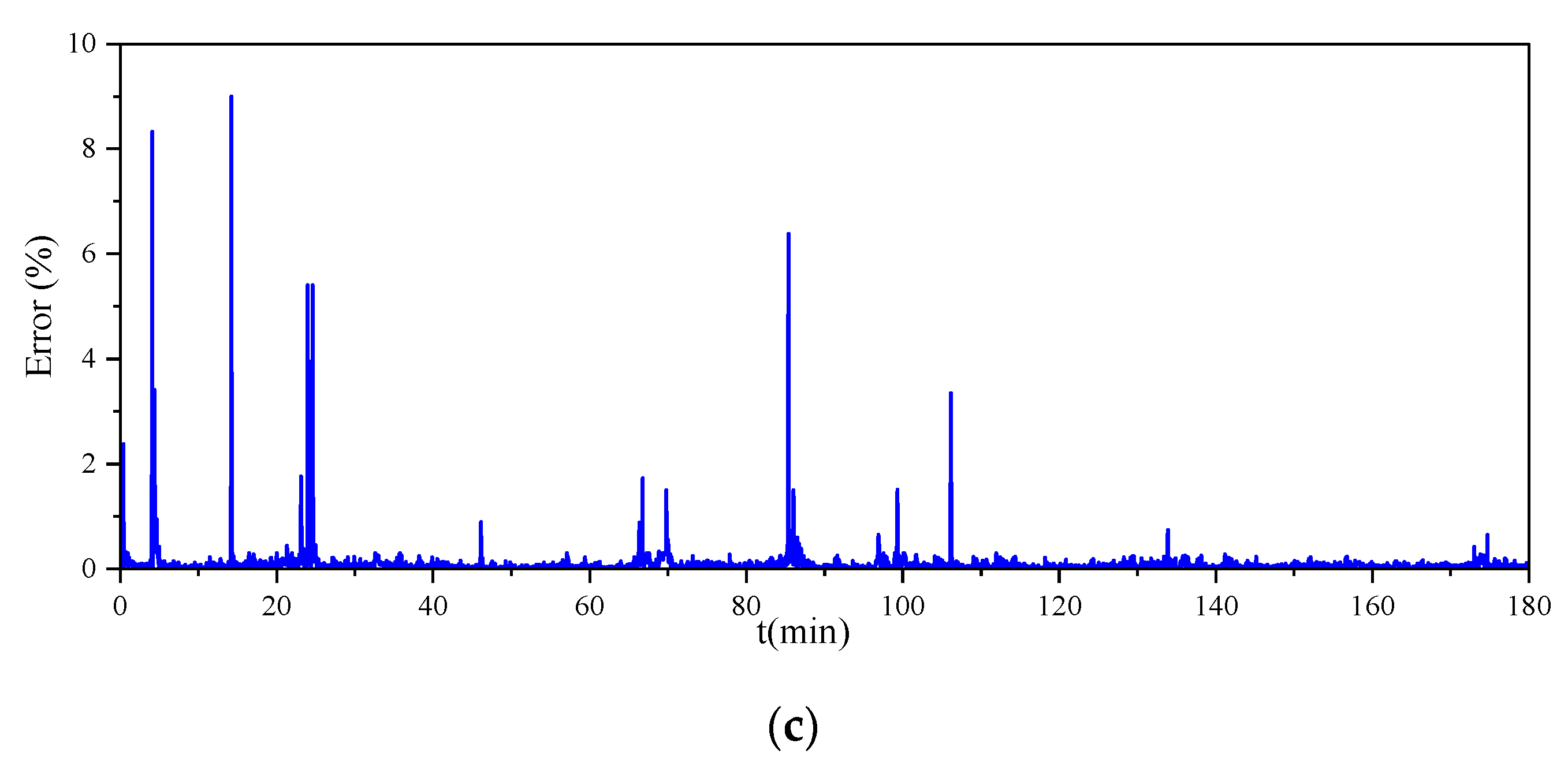
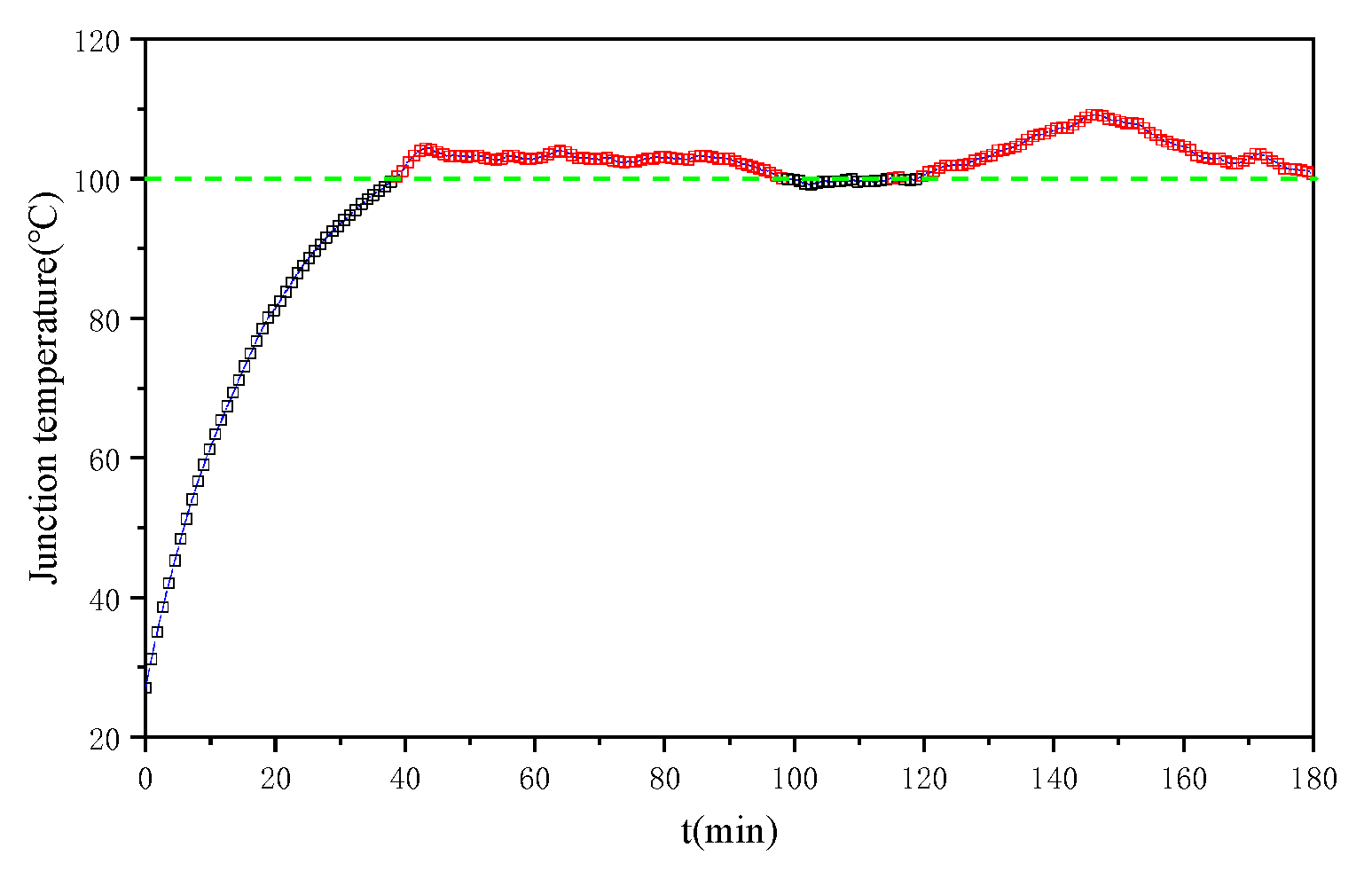
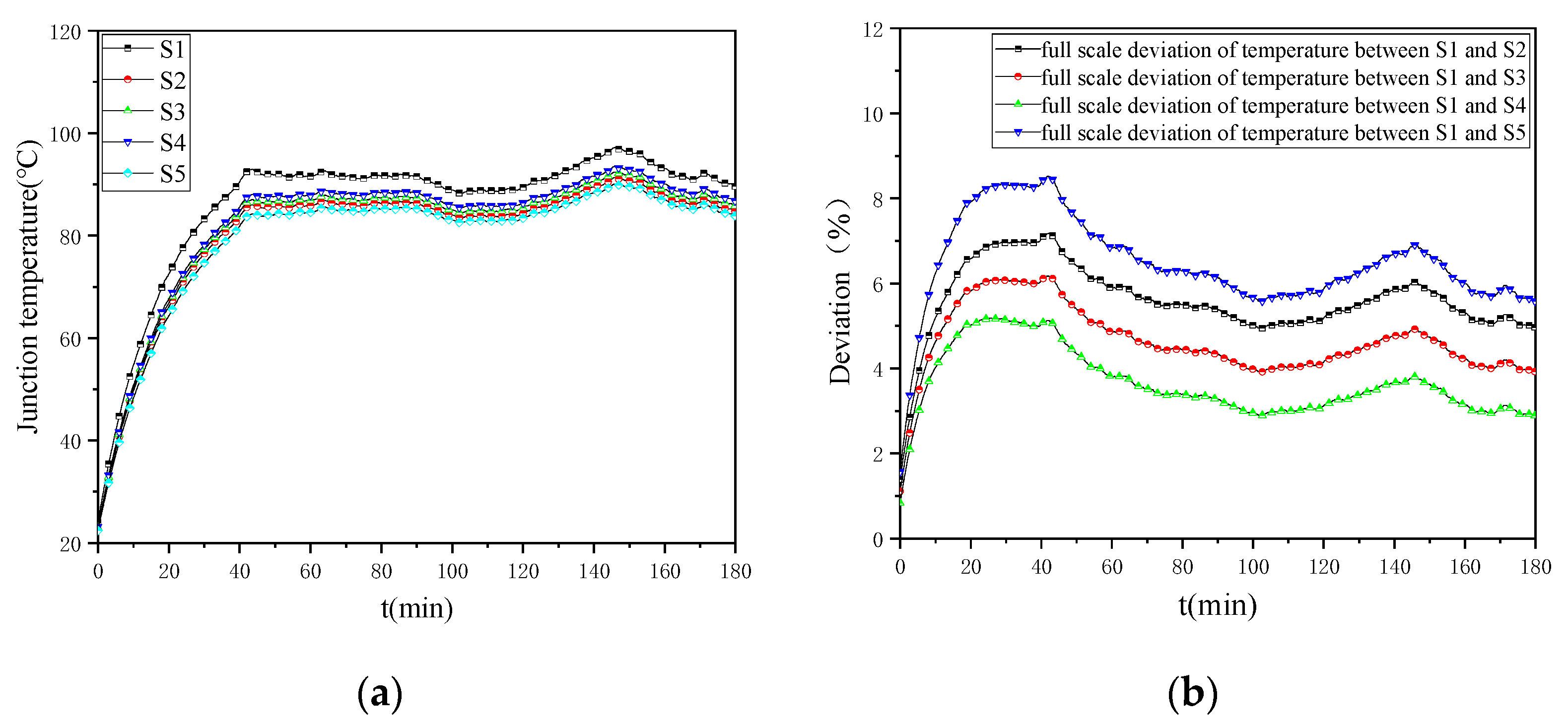
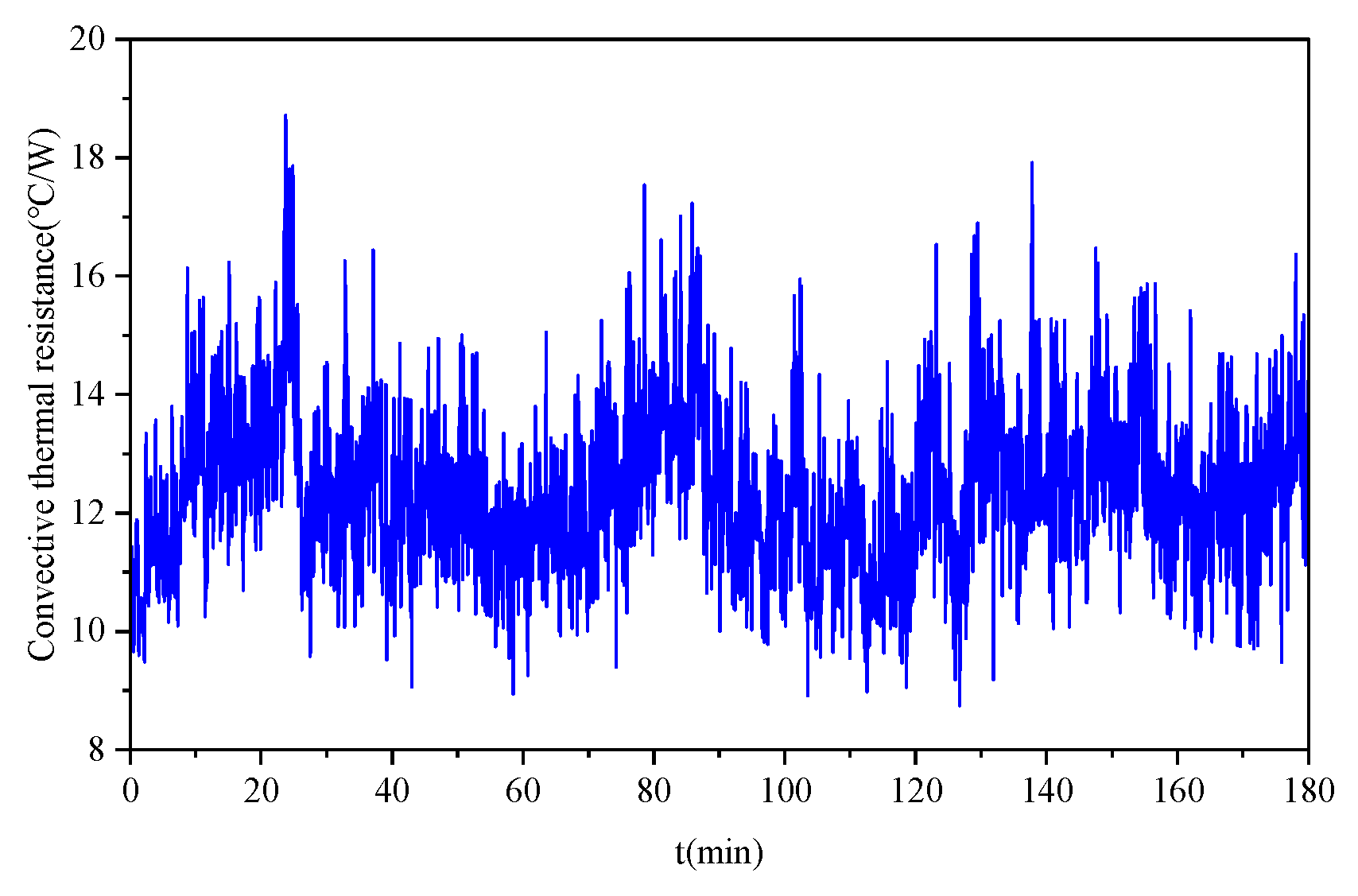


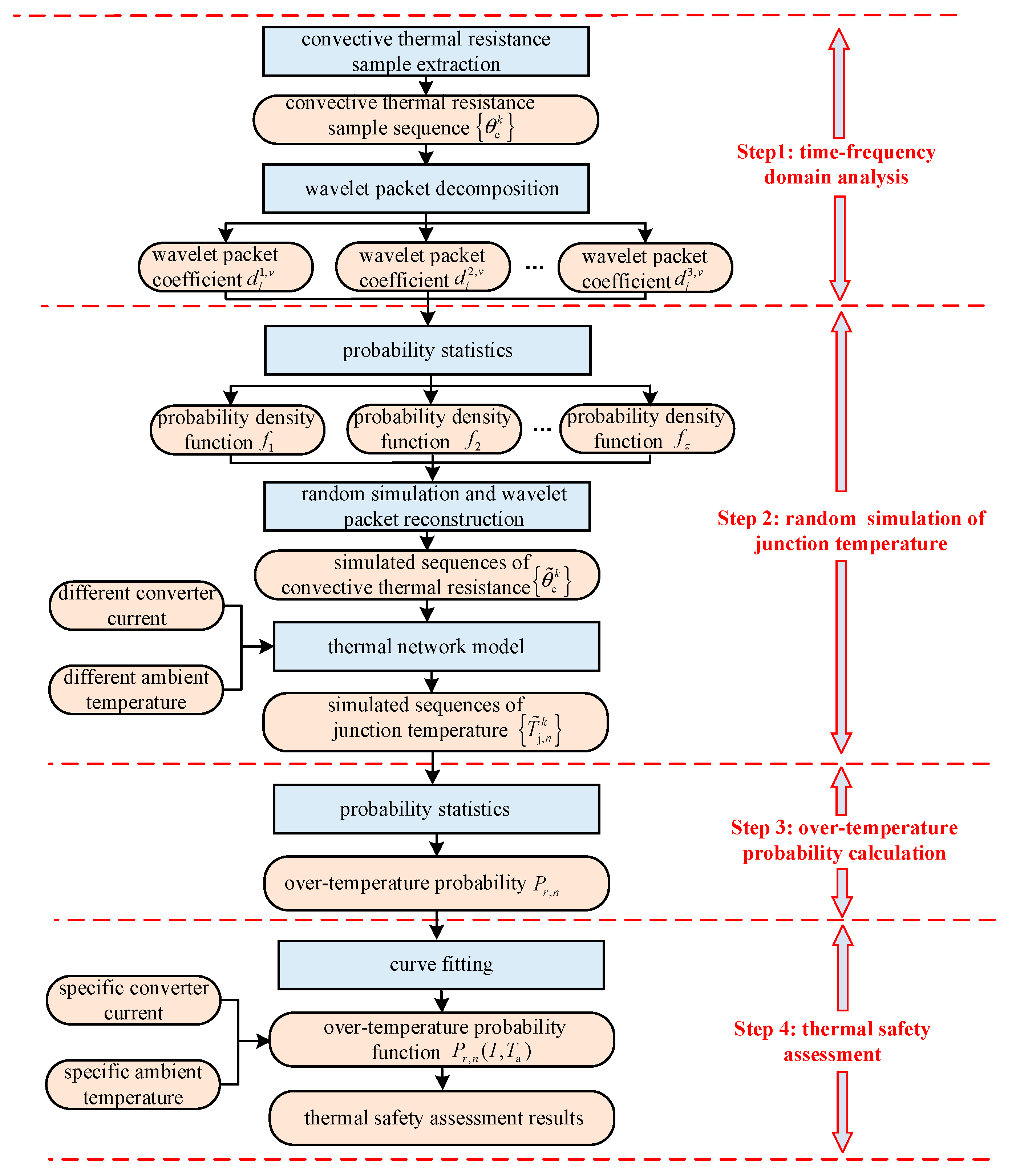
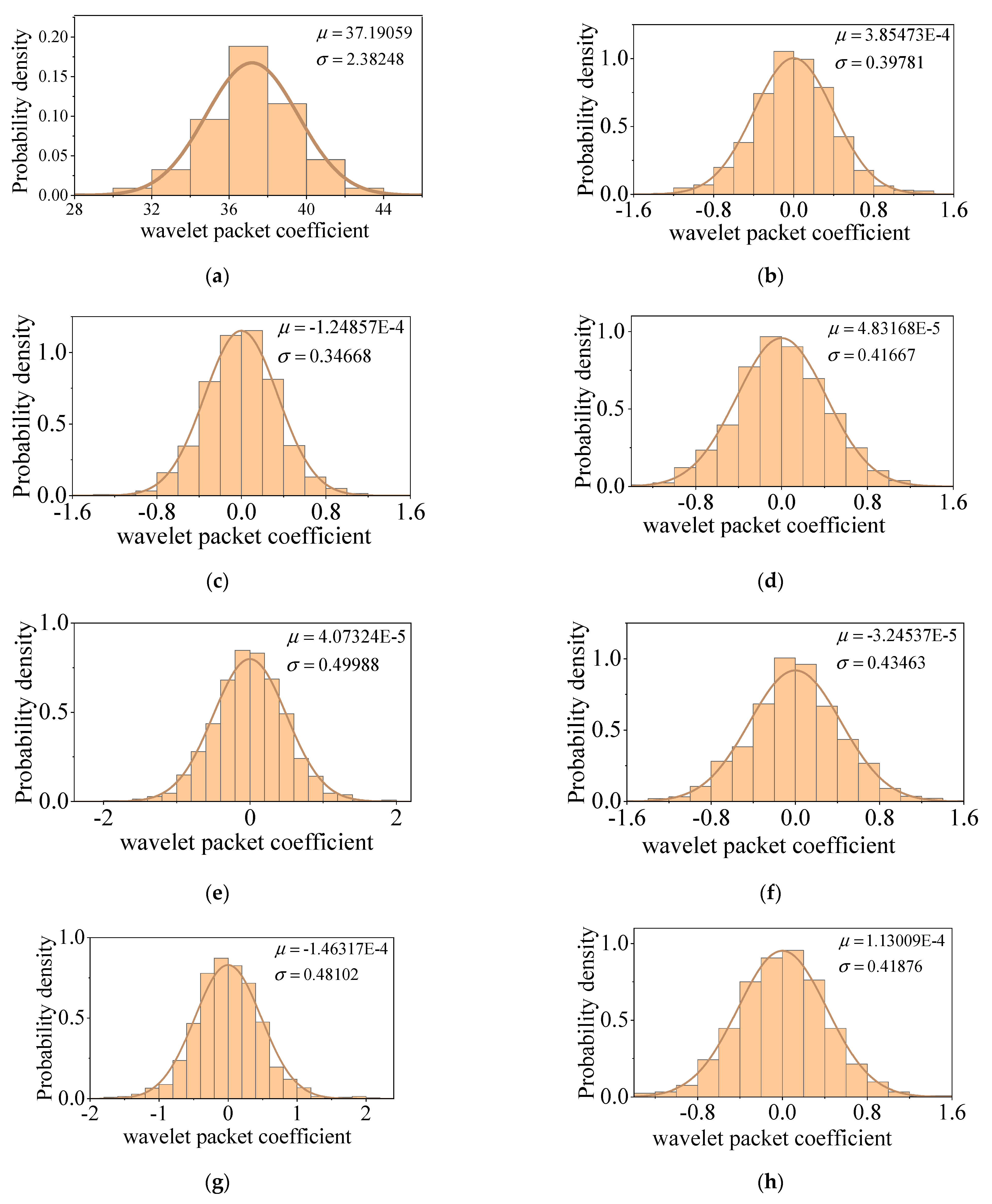
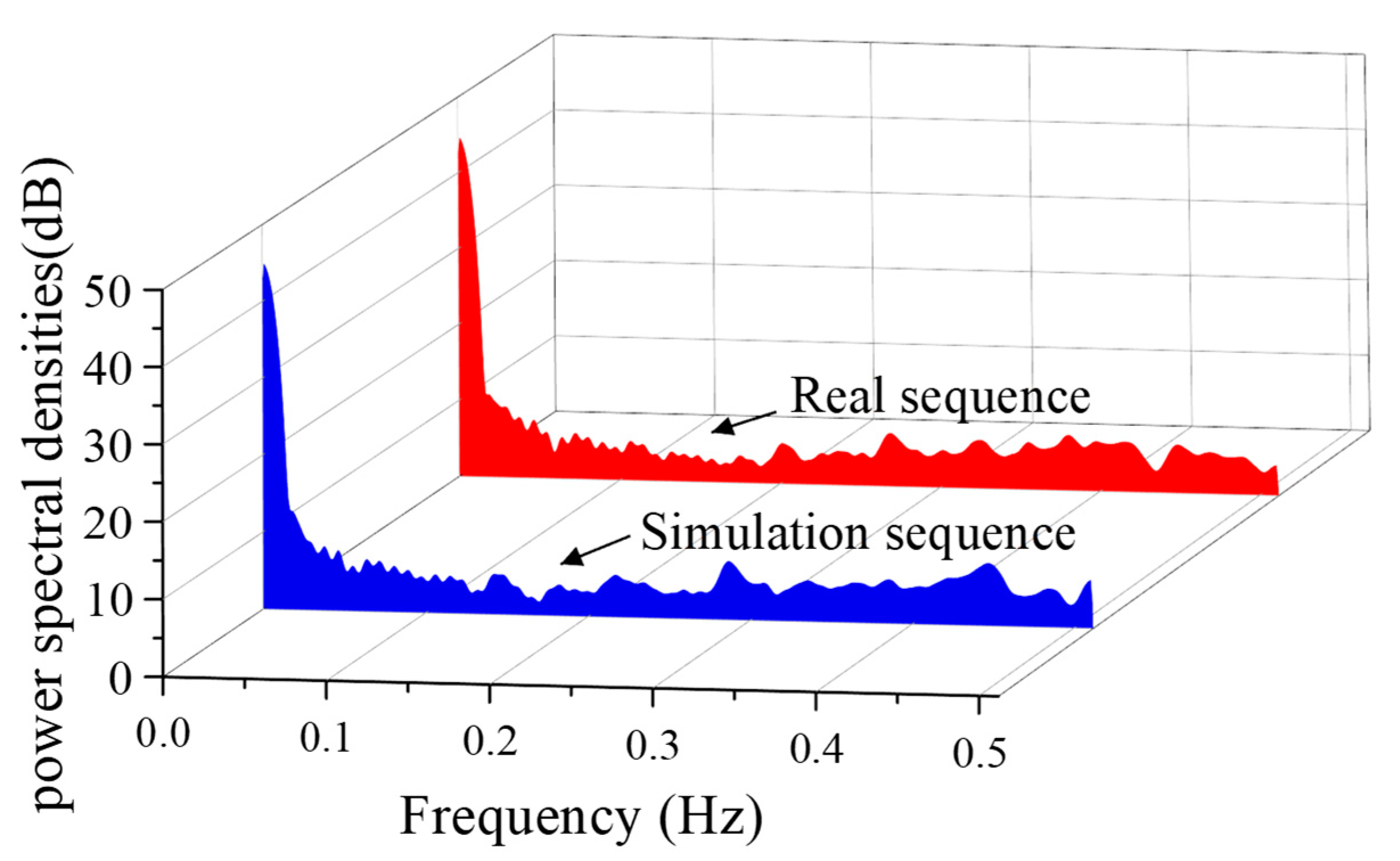
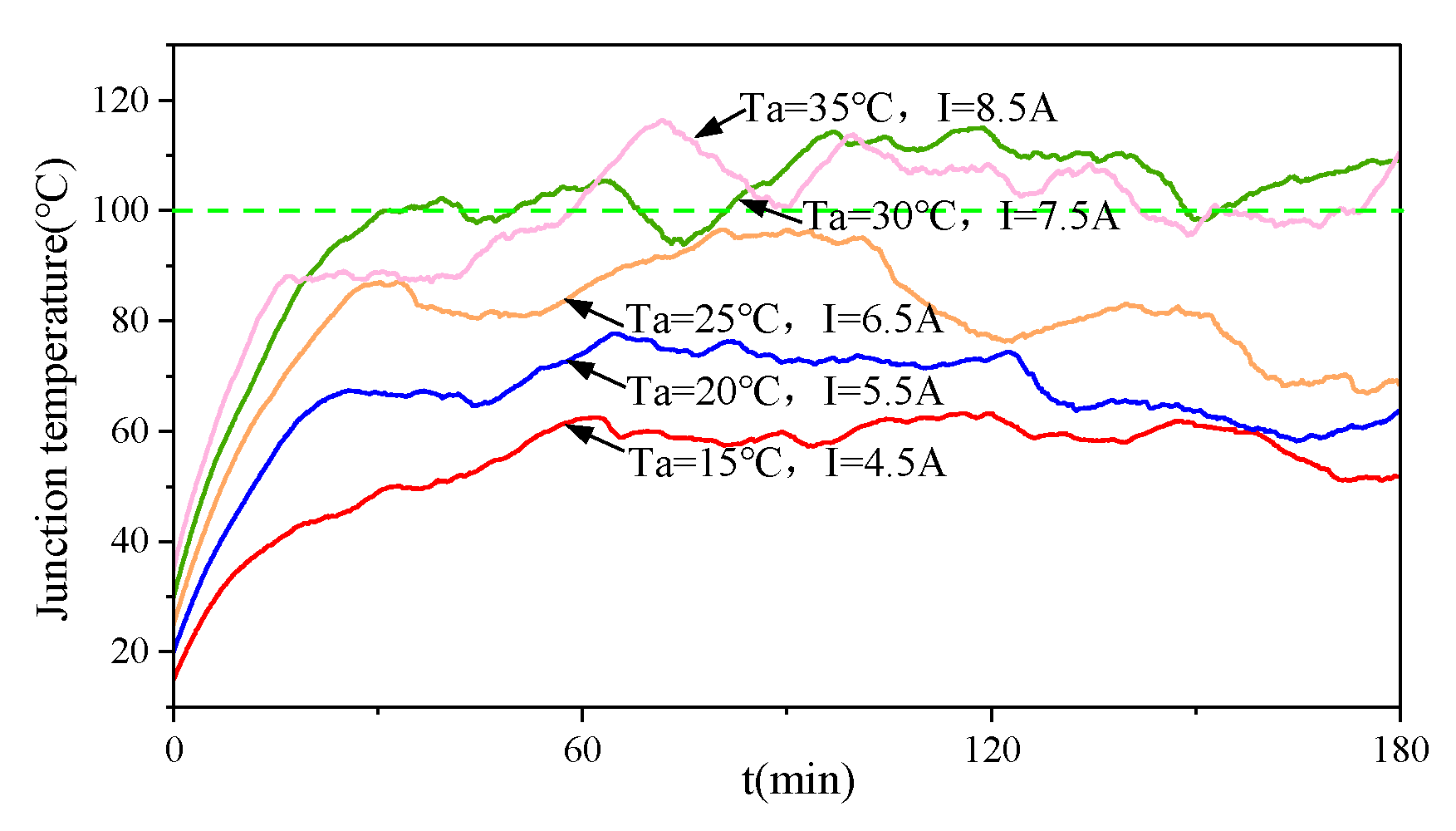
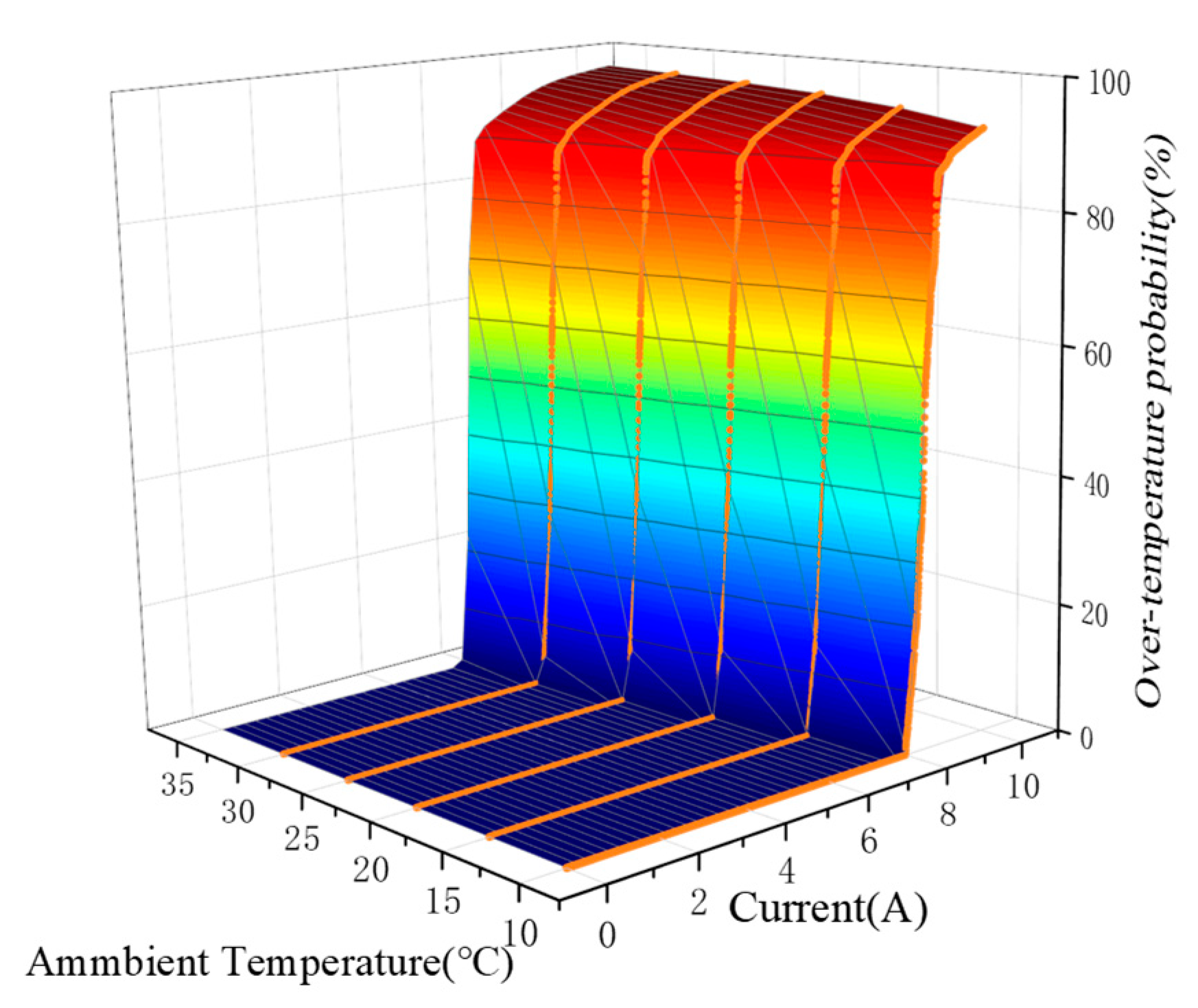

| Parametric | Numerical Value | Parametric | Numerical Value |
|---|---|---|---|
| θ1,n/(°C/W) | 0.2736 | C1,n/(J/°C) | 0.0014 |
| θ2,n/(°C/W) | 0.3376 | C2,n/(J/°C) | 0.0123 |
| θe/(°C/W) | 1.0521 | Ce/(J/°C) | 12.2064 |
| Fitting Coefficient | Value |
|---|---|
| μ1 | −2449.27 |
| μ2 | 976.43 |
| μ3 | −73.51 |
| μ4 | 2.04 |
| μ5 | −0.019 |
| δ1 | 6.88 |
| δ2 | −0.11 |
| δ3 | −0.0039 |
| δ4 | 0.00033 |
| δ5 | 0.0000055 |
| ε1 | 3.80 |
| ε2 | 0.1816 |
| ε3 | −0.01567 |
| ε4 | 0.000547 |
| ε5 | 0.0000062 |
| Group | Converter Current I(A) | Ambient Temperature Ta (°C) | Over-Temperature Probability (%) |
|---|---|---|---|
| #1 | 8.9 | 35 | 94.58 |
| #2 | 7.9 | 30 | 90.26 |
| #3 | 6.9 | 25 | 3.31 |
| #4 | 5.9 | 20 | 0 |
| #5 | 4.9 | 15 | 0 |
Disclaimer/Publisher’s Note: The statements, opinions and data contained in all publications are solely those of the individual author(s) and contributor(s) and not of MDPI and/or the editor(s). MDPI and/or the editor(s) disclaim responsibility for any injury to people or property resulting from any ideas, methods, instructions or products referred to in the content. |
© 2024 by the authors. Licensee MDPI, Basel, Switzerland. This article is an open access article distributed under the terms and conditions of the Creative Commons Attribution (CC BY) license (https://creativecommons.org/licenses/by/4.0/).
Share and Cite
He, W.; Zhu, Y.; Liu, Z.; Lin, J.; Bao, F.; Zu, W.; Ying, Z. Thermal Safety Assessment Method for Power Devices in Natural Air-Cooled Converters. Electronics 2024, 13, 1665. https://doi.org/10.3390/electronics13091665
He W, Zhu Y, Liu Z, Lin J, Bao F, Zu W, Ying Z. Thermal Safety Assessment Method for Power Devices in Natural Air-Cooled Converters. Electronics. 2024; 13(9):1665. https://doi.org/10.3390/electronics13091665
Chicago/Turabian StyleHe, Weichao, Yiming Zhu, Zijian Liu, Jiaxue Lin, Fengshuo Bao, Wei Zu, and Zhanfeng Ying. 2024. "Thermal Safety Assessment Method for Power Devices in Natural Air-Cooled Converters" Electronics 13, no. 9: 1665. https://doi.org/10.3390/electronics13091665
APA StyleHe, W., Zhu, Y., Liu, Z., Lin, J., Bao, F., Zu, W., & Ying, Z. (2024). Thermal Safety Assessment Method for Power Devices in Natural Air-Cooled Converters. Electronics, 13(9), 1665. https://doi.org/10.3390/electronics13091665






